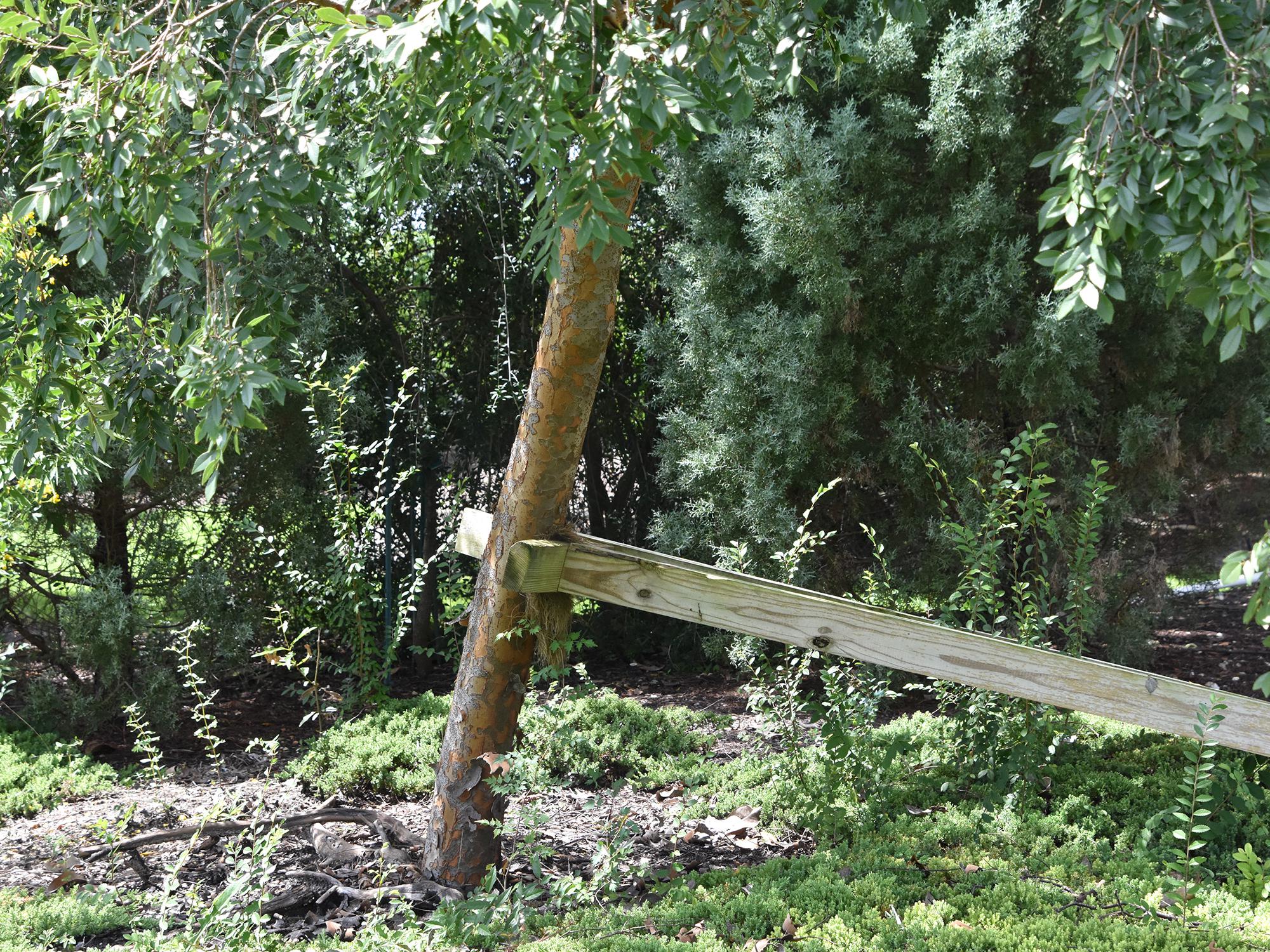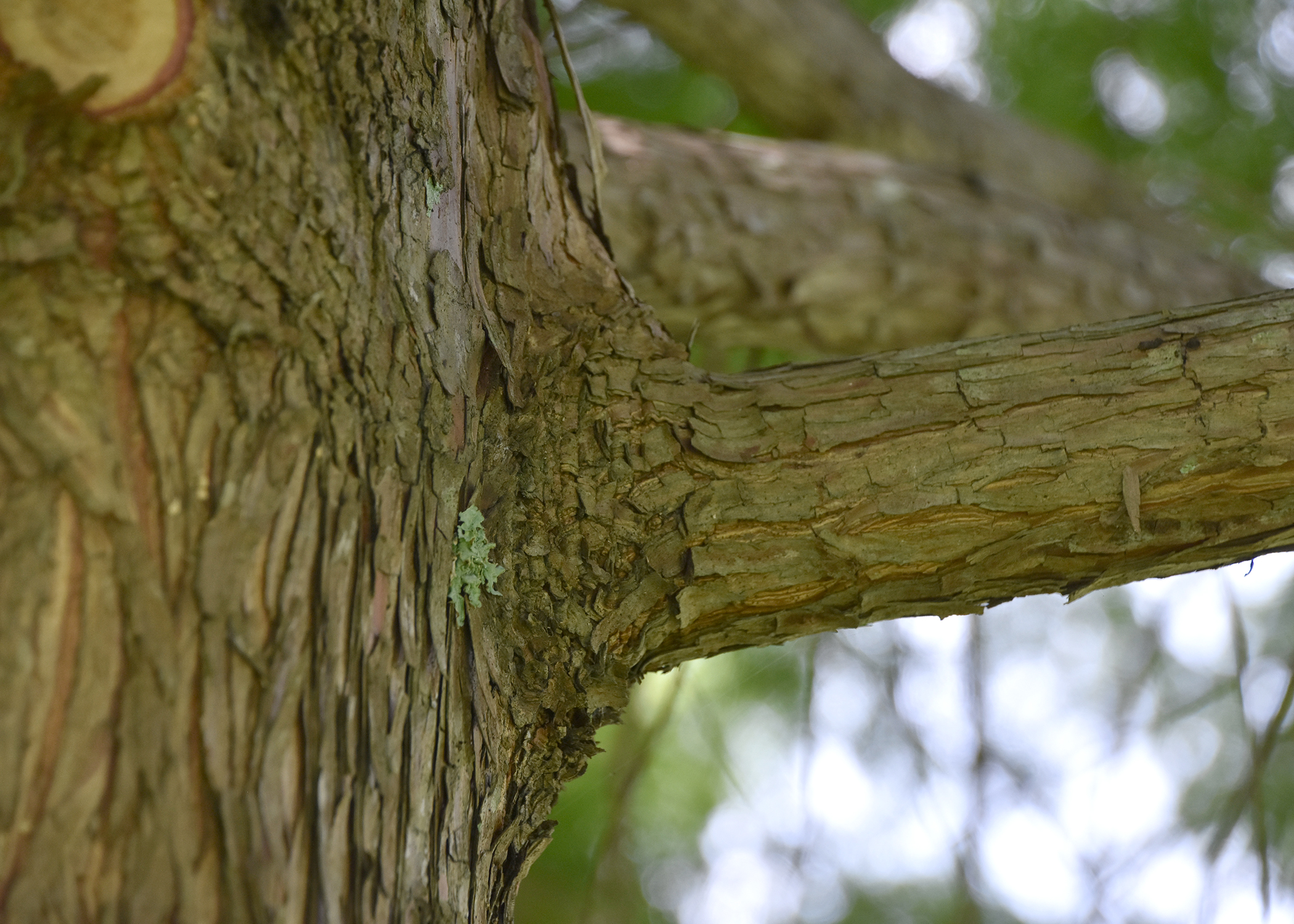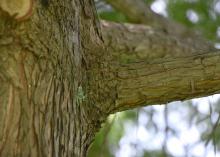Information Possibly Outdated
The information presented on this page was originally released on August 29, 2016. It may not be outdated, but please search our site for more current information. If you plan to quote or reference this information in a publication, please check with the Extension specialist or author before proceeding.
Pruning helps trees, shrubs heal from weather damage
The current tropical systems swirling around are causing more homeowners to wonder about how to deal with weather-related damage in the landscape.
Because our trees and shrubs would receive most of the landscape damage in a storm, the vast majority of questions I get revolve around pruning.
Branch and limb damage impacts the shape and general health of trees and shrubs. Prune a damaged tree just enough to balance any loss of roots, but avoid severe pruning. Cut out broken, diseased and malformed branches, and give the tree a desirable shape.
But many homeowners really don’t know how to prune trees and shrubs correctly. Many are a little hesitant to prune. Through no fault of their own, they don’t really know where to start.
Small branches and limbs, typically 1 inch or less in diameter, can be removed with a single cut using bypass pruners. If you’re looking for a pruner recommendation, I like either Corona or Felco bypass pruners. These are great pruners to give as gifts to your favorite gardener.
Never use anvil-type pruners, as they crush the stems and slow their recovery. A tree saw is my tool of choice for larger-diameter branches, using the drop cut method (1-2-3 technique) to avoid ripping bark and wood.
To start the drop cut method, make a cut on the underside of the limb, about 1 foot from the trunk or branch. Cut about one-third to one-half way through the limb. Make a second cut on the upper side of the limb, about 2 to 6 inches farther out on the limb than the first cut. Continue sawing until the branch splits off. Remove the remaining stub by making a single cut at the branch collar.
Removal at the branch collar -- the slightly raised area at the attachment point on the trunk -- will help the tree heal. Do not cut flush with the trunk or branch from which you are pruning.
Tree and shrub healing can be a little mysterious to some gardeners. A pruning cut is similar to the damage people suffer when we have a cut in our skin. Although we use bandages to protect wounds during healing, gardeners should never cover up pruning cuts. Through a process called compartmentalization, the tree strengthens and seals off the area around an injury. Never use a “Band-Aid,” such as paint, caulk, cement or any other material, to cover a tree wound. Treating in this manner will trap disease organisms and moisture.
Sometimes trees will bend but not break. Leaning trees can be straightened and staked or braced back into an upright position. The staking or bracing may be required for an extended period, up to two years. It is important to remove any wires or bracing materials that surround the trunk after the tree has become stable. Otherwise, the wires will girdle the trunk and inhibit future growth.
Continue tree care after repairs are completed. Adequate soil moisture and mulch are needed to conserve moisture as the dry fall months approach.
There are a few resources that can help you become a better pruner. First, take a look at the Southern Gardening TV segment “Pruning Demystified” at https://www.youtube.com/watch?v=NMDjEPJ6fKU&feature=youtu.be, especially the portion demonstrating the drop cut method. Also see “Repairing Storm-Damaged Shade, Ornamental and Fruit Trees” at http://extension.msstate.edu/publications/information-sheets/repairing-storm-damaged-shade-ornamental-and-fruit-trees.
At this point, if you’re unsure about how to handle large, damaged limbs, contact a professional certified arborist.
Editor's note: Dr. Gary Bachman is an Extension and research professor of horticulture at the Mississippi State University Coastal Research and Extension Center in Biloxi. He is also the host of the popular Southern Gardening television and radio programs.











